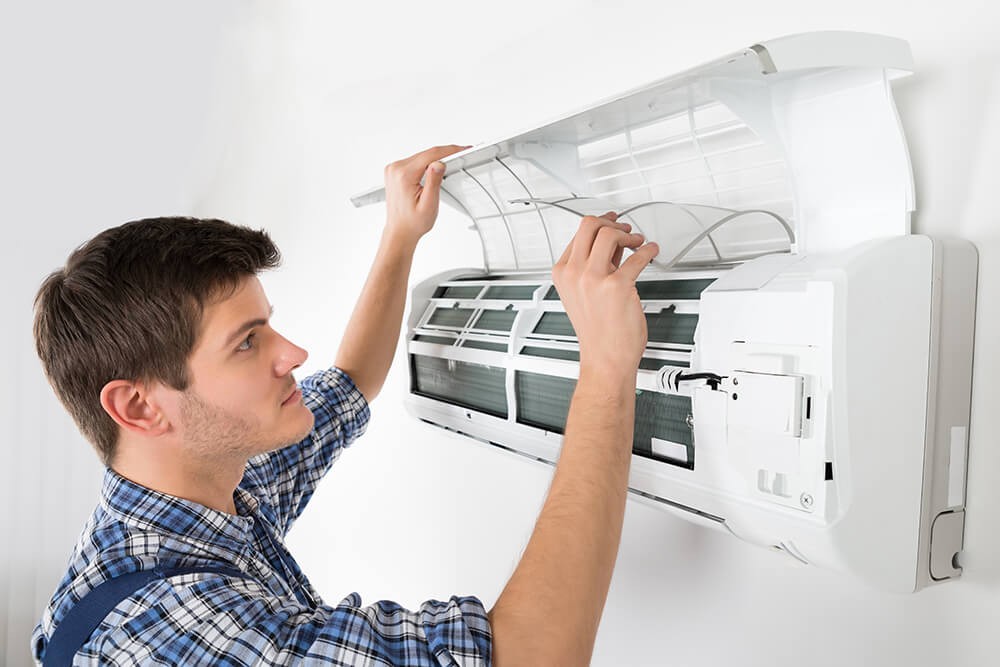The air quality can be drastically lowered by mold. If you have a mold allergy, you can have a runny nose, sneezing, coughing, skin rash, headache, sore throat, and irritated eyes if you come in contact with mold spores through touching or breathing them in.
Extreme mold allergies can cause asthma and other breathing problems. To deal with mold growth in the basement or bathroom is a problem in and of itself, but what do you do if mold starts growing in your air conditioner or air ducts? This article provides helpful advice for removing mold from your air conditioner and avoiding future issues.
Where does mold come from in an AC?
There seems to be mold in every room. They can’t grow without both a supply of organic food and water. High humidity or unchecked leaks are two potential causes of moisture. If the evaporator coils and condensers are not properly drained, they will contribute to leaks. The mold’s host surface, be it carpet, wood, or organic dust particles, serves as its source of nourishment. This has a cumulative effect on the air conditioner‘s cooling system over time.
Professionals who fix air conditioners say that mold shouldn’t grow in the system’s ducts or cooling units. The Styrofoam and metals have little nutritional value. Unfortunately, mold can quickly spread if dust is allowed to settle in these areas.
Mold in the AC: How to Remove It?
Powerful Air Conditioning System
If mold starts growing in your central air conditioning system’s ducts, you’ll need to call in the experts. As soon as mold is detected, the system must be turned off to prevent further contamination. Cleaning the ducts with a vacuum is a necessary. Sheet metal ducts are less of a hassle to clean than their plastic or fiberglass counterparts. You shouldn’t use biocides to eliminate mold.
Air conditioners for windows
Little mold spots on the air vents and grate are sometimes only noticed after they have spread. The visible mold is only the tip of a very large iceberg. It’s necessary to take apart the complete system and clear the mold from the evaporators, coils, air ducts, etc., but there’s always a chance you’ll miss some. Mold growth necessitates the replacement of all window air conditioners.
Mold Growth in Air Conditioners: What You Can Do About It?
The key to preventing mold growth in HVAC systems is maintaining a steady moisture level. Several suggestions are provided below on how to achieve this goal.
Make sure the air conditioner is securely attached to the window to keep out rain and humid outside air. A small incline toward the exterior is required for window units. Condensation is aided in this way. Dust buildup can be avoided by regularly cleaning the filters and grates in window air conditioners. Make sure the central air conditioning drains are clean. When the drains get clogged up with trash, it can lead to serious floods.
Seasonal maintenance for portable air conditioners includes emptying them. There is a full reservoir indicator light and a button to shut them off automatically. Expert electricians warn that mold growth in an air conditioner or heating, ventilation, and air conditioning (HVAC) system can be disastrous for indoor air quality. The cost and difficulty of cleaning up are daunting.
Possibly the most effective methods for dealing with mold are moisture control and the other preventative measures mentioned above. If you, too, are experiencing issues with your air conditioner, it is time to set up an appointment with a professional. It’s important for the health and safety of your family that the air conditioner be in top condition and clear of mold.







More Stories
What You Should Know about Epoxy Resin
Say Goodbye to Storage Hassles: Embrace the Door-to-Door Solution
Tips for Putting up a Water Softener: Specific Ideas